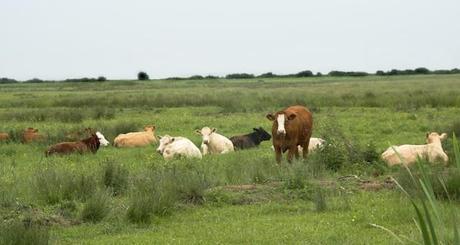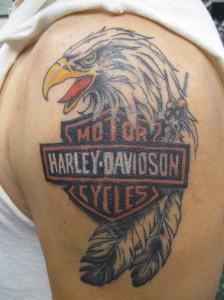
The following blog was posted on BtoB Online in November. Written by Randall Rozin, global director-brand management and marketing communications at Dow Corning Corp., it compares today’s brand managers with the cowboys of the Wild West, who branded their cows to differentiate them from those of other herds. We thought this thought-provoking blog was worth sharing with you, our MarketingTango audience. Enjoy!
Riding for the Brand: from Cowboys to Corporations
In the late 1800s, cowboys drove huge herds of cattle across the central plains of the United States. Often cattle from different ranches would mix together. To tell which cattle belonged to whom, each ranch had its own special symbol that would be branded with a hot iron on the hide of every calf belonging to that ranch.
Brands became almost a heraldic crest, a cattleman’s coat of arms, if you will. Brands not only identified an owner or a ranch, but also provided a set of traditions and a unique sense of identity for the cowboys who represented the brand’s ranch. It was not uncommon for a cowboy of the times to ride for the brand more than for the individual ranch owner.
In the preface to his short story “Riding for The Brand,” Louis L’Amour described the term as an expression of loyalty to an employer. It was considered a compliment of the highest order. Today, a great deal of effort is invested by companies creating internal branding efforts designed to inspire employee identity, loyalty and a sense of “riding for the brand.”
On the great plains of the American West, “ketch hands” roped each calf and pulled it near the branding fire. “Flankers” then grabbed the calf by the ear and loose skin of the flank, lifted it up and laid it on its side. Others called out the brand of the calf’s mother and the appropriate branding iron was brought to the fire. While one man held the calf, an “iron man” branded the calf at the hips, ribs or shoulder, according to the practice of the owner.
Modern, corporate brand managers employ an analogous process. Today’s ketch hands are typical prepurchase activities such as advertising, sales promotions, point of-purchase displays, permission-based marketing, social media and trade show sellers. Each of these elements is designed to bring potential buyers “closer to the branding fire.”

Where the ultimate aim is for customers to perceive a brand as unique, relevant, credible and differentiated enough to seek out, most brand managers must adopt the cowboy’s iron-man process and apply the brand one interaction at a time. However, rather than having one iron man, modern brand managers must look for ways to make each brand representative an iron man in his or her own right. Today’s brand iron men and women must look for ways to imprint their brands on their customers through behaviors, attitudes and consistent delivery of brand promises made at all points of contact
While it is entertaining to draw similarities between the branding process of the cowboys of old and modern branding, it is admittedly an oversimplification. Today’s brand managers do not have the luxury of taking one key opportunity to permanently brand their customers for life. In addition, unlike the rancher, the brand is not truly owned by the company, but by the customer.
An important goal of the modern brand manager is to uncover each “moment of truth” in the relationship between his or her brand and the customer. For it is within each moment of truth that brands are built or damaged. The key for effective overall brand management is to ensure that each iron man understands his or her role in the branding process.
Like the cowboys of the Wild West, today’s brand manager looks for ways to differentiate his product or service from similar offerings. The modern brand is a sign of ownership, of heritage, of quality level and of employee identification and affiliation. The ultimate goal of both the cowboys of the past and brand managers of today is to create more “riders for the brand” to help differentiate the brand and to create more loyal advocates for it.
Originally posted on http://www.btobonline.com/apps/pbcs.dll/article?AID=/20121119/BLOGS/121119994/1656/BLOGS
